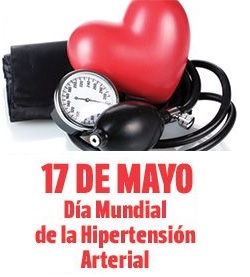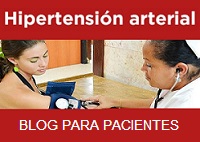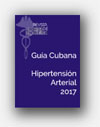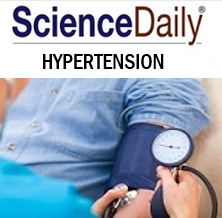COMISIÓN NACIONAL TĖCNICA ASESORA DEL PROGRAMA
DE HIPERTENSIÓN ARTERIAL. MINSAP. CUBA.
____________________________________________________________________
Acta No. 2 / 2013
Día: 28 de febrero de 2013. Hora: 3.10 p.m.
Salón de reuniones. Edificio Soto MINSAP
Asistentes:
1. Dr. Delfín Pérez Caballero. (Clínico)
2. Dr. Reinaldo de la Noval García (Cardiólogo)
3. Dr. Alfredo Dueñas Herrera (Cardiólogo)
4. Dra. Ana Ibis Gamez Bernal (Inst. de Nutrición)
5. Dr. Orlando Landrove Rodriguez (MINSAP)
6. Dra. Esther Pallarols Mariño (MINSAP)
7. Dr. Emilio González Rodríguez (Villa Clara)
8. Dr. Roberto Pérez Moreno (Clínico)
9. Dra. Isis Betancourt Torres (Clinico)
Orden del día:
1. Control de acuerdos
2. Actividades por el Día Mundial de la Salud y HTA
3. Diplomado de HTA
4. Informe sobre el Proyecto MAPA
5. Datos del Balance 2012 y Proyecciones del presente año 2013
6. Asuntos generales
Punto No. 1:
Delfín: El acuerdo anterior No. 13 se mantiene la jornada de HTA del 7 de abril al 17 de mayo. El Dr. Landrove trae un Plan de Actividades que a continuación les presentará.
Dr. Landrove: Expone el plan de actividades propuestas para el Día Mundial de la Salud que este año se dedicará como tema a la Hipertensión, detalla las diferentes actividades, fecha, lugares, participantes y responsables. En breve se les hará llegar a todos los miembros de la CNTA la versión final de este plan.
Dr. Dueñas: Yo propongo que a raíz de la celebración de un evento científico sobre HTA en Matanzas el día 17 de mayo podamos realizar una actividad ese mismo dia en esa provincia.
Dr. Delfín: El acuerdo No. 14 de realizar I Jornada Científica Provincial de Resultados en Investigaciones de HTA en el segundo semestre de 2013 queda pendiente y ya debemos ir confeccionando el programa. Asimismo el acuerdo No. 15 sobre la capacitación territorial no queda bien claro y el Dr. Landrove propone que en la reunión mensual del GBT de todos los policlínicos del país se lleve en el mes de mayo un tema científico de actualización en HTA dirigido a todos los médicos y enfermeras.
Dr: Delfín: Entonces para lograr esto la comisión debe elaborar un material con un tema que se considere importante y actual sobre HTA y hacerlo llegar con antelación a todos los GBT del país. Acuerdo No. 17. Aprobado unánime
Dr. Landrove: Tenemos 854 GBT en el país, se los haremos llegar y que un clínico desarrolle el tema de actualización.
Dr. Delfín: Ya desarrollamos el punto No. 2. Siguiendo nuestra orden del día los puntos 3 y 4 Diplomado de HTA y Proyecto MAPA van a tener que ser aplazados pues los miembros de la comisión encargados de los mismos no han venido a la reunión de hoy. Es necesario que la Dra. Lourdes vaya a discutir con el Dr. Landrove el Proyecto MAPA para su elevación al nivel central para su implementación Acuerdo No. 18 .Aprobado unánime.
Dr. Landrove: Se ha decidido comprar por el proyecto mas estaciones de MAPA y reducir los registradores. Todos esos detalles están incluidos en el proyecto.
Dr. Delfín: Se esta concluyendo el informe de balance 2012 del trabajo de la CNTA.
Dr. De la Noval: No todos los miembros de la comisión han enviado sus actividades para que sean incluidas en el mismo. Esperamos por ellos. Otro asunto que nos queda pendiente y que es un acuerdo no cumplido es el ingreso a nuestra comisión de un compañero de APS y otro de gineco-obstetricia. El Dr. Landrove queda pendiente con esa tarea.
Dr. Delfín: Pasemos a los asuntos generales, el Dr. Emilio aquí presente nos solicitó un aval de la comisión para la realización del evento HTA 2014 en Villa Clara el próximo año en la ultima semana de mayo. Acuerdo No. 19 Aprobado unánime
La fecha de la próxima reunión de esta comisión 4to jueves de abril es decir, el día 25 de abril.
Se termina la reunión a las 4.52 pm
Dr. Delfín Pérez Caballero
Presidente
![]()
Revista Cubana de Medicina Militar
Por: Dra. Idelmis Remón Popa, Dra. Odalys Carolina González Sotolongo y Dr. C. Ángel Arpa Gámez. Rev Cub Med Mil vol.42 no.1 Ciudad de la Habana ene.-mar. 2013.
La hipertensión arterial como causa de mortalidad
Por: Dra. Vania Ferrer Santos, Dra. Mileidys Domínguez Hernández, y Dra. Ariadna Méndez Rosaba. Rev Cub Med Mil vol.40 no.2 Ciudad de la Habana abr.-jun. 2011.
Study uncovers mechanism for how grapes reduce heart failure associated with hypertension
 Grapes found to activate genes responsible for antioxidant defense in the heart.
Grapes found to activate genes responsible for antioxidant defense in the heart.
A study appearing in the Journal of Nutritional Biochemistry¹ demonstrates that grapes are able to reduce heart failure associated with chronic high blood pressure (hypertension) by increasing the activity of several genes responsible for antioxidant defense in the heart tissue. Grapes are a known natural source of antioxidants and other polyphenols, which researchers believe to be responsible for the beneficial effects observed with grape consumption. This study, funded by a grant from the National Institutes of Health (NIH), and conducted at the University of Michigan Health System, uncovered a novel way that grapes exert beneficial effects in the heart: influencing gene activities and metabolic pathways that improve the levels of glutathione, the most abundant cellular antioxidant in the heart.
An estimated 1 billion people worldwide have hypertension, which increases the risk of heart failure by 2 to 3-fold. Heart failure resulting from chronic hypertension can result in an enlarged heart muscle that becomes thick and rigid (fibrosis), and unable to fill with blood properly (diastolic dysfunction) or pump blood effectively. Oxidative stress is strongly correlated with heart failure, and deficiency of glutathione is regularly observed in both human and animal models of heart failure. Antioxidant-rich diets, containing lots of fruits and vegetables, consistently correlate with reduced hypertension.
In this study, conducted at the University of Michigan Health System, hypertensive, heart failure-prone rats were fed a grape-enriched diet for 18 weeks. The results reproduced earlier findings that grape consumption reduced the occurrence of heart muscle enlargement and fibrosis, and improved the diastolic function of the heart. Furthermore, the mechanism of action was uncovered: grape intake “turned on” antioxidant defense pathways, increasing the activity of related genes that boost production of glutathione.
“Our earlier studies showed that grapes could protect against the downward spiral of hypertensive heart failure, but just how that was accomplished – the mechanism – was not yet known,” said lead investigator E. Mitchell Seymour, Ph.D. “The insights gained from our NIH study, including the ability of grapes to influence several genetic pathways related to antioxidant defense, provide further evidence that grapes work on multiple levels to deliver their beneficial effects.”
Seymour noted that the next phase of the NIH study, which will continue into 2014, will allow his team to further define the mechanisms of grape action, and also look at the impact of whole grape intake compared to individual grape phytonutrients on hypertension-associated heart failure.
“Our hypothesis is that whole grapes will be superior to any individual grape component, in each of the areas being investigated,” said Dr. Seymour. “The whole fruit contains hundreds of individual components, which we suspect likely work together to provide a synergistic beneficial effect.”
The insights gained from this research will further the knowledge on grapes and heart health, but will also provide translational information on the value of dietary (whole foods) and dietary supplement approaches for prevention of heart disease stemming from chronic hypertension.
“The NIH grant is allowing the team at the University of Michigan Medical System to expand its work in this important area and further highlight the multi-faceted role of grapes in supporting heart health,” said Kathleen Nave, president of the California Table Grape Commission. “This work will also provide key insights into the role of whole fruit versus individual components of a fruit, using grapes as the benchmark.”
(Fuente: Journal of Nutritional Biochemistry – sitado por: Eurekalert.) [Actualizado: 02 de mayo 2013]
 Por: Pietro Amedeo Modesti, Stefano Rapi, Mohamed Bamoshmoosh, Marzia Baldereschi, Luciano Massetti, Luigi Padeletti, Gian Franco Gensini, Dong Zhao, Dawood Al-Hidabi, Husni Al Goshae. BMJ Open 2012;2:e001062 doi:10.1136/bmjopen.
Por: Pietro Amedeo Modesti, Stefano Rapi, Mohamed Bamoshmoosh, Marzia Baldereschi, Luciano Massetti, Luigi Padeletti, Gian Franco Gensini, Dong Zhao, Dawood Al-Hidabi, Husni Al Goshae. BMJ Open 2012;2:e001062 doi:10.1136/bmjopen.
Hypertension prevalence (age-standardised to the WHO world population 2001) based on fulfilling the same criteria on both visits (11.3%; 95% Cl 10.7% to 11.9%), was 35% lower than estimation based on the first visit (17.3%; 16.5% to 18.0%). Advanced age, blood glucose ≥7 mmol/l or proteinuria ≥1+ at dipstick test at visit one were significant predictors of confirmation at visit 2. The 959 participants found to be hypertensive at visit 1 or at visit 2 only and thus excluded from the final diagnosis had a rate of proteinuria (5.0%; 3.8% to 6.5%) comparable to rates of the general population (6.1%; 5.6% to 6.6%), and of subjects normotensive at both visits (5.6%; 5.1% to 6.2%). Only 1.9% of Yemen population classified at high or very high cardiovascular (CV) risk at visit 1 moved to average, low or moderate CV risk categories after two visits.
Hypertension prevalence based on readings obtained after two visits is 35% lower than estimation based on the first visit, subjects were excluded from final diagnosis belonging to low CV risk classes. [Actualizado: 02 de mayo 2013].
 Por: Charumathi Sabanayagam, Boon Wee Teo, E Shyong Tai, Tazeen H Jafar y Tien Yin Wong. BMC Nephrology 2013, 14:86.
Por: Charumathi Sabanayagam, Boon Wee Teo, E Shyong Tai, Tazeen H Jafar y Tien Yin Wong. BMC Nephrology 2013, 14:86.
Chronic kidney disease (CKD) is an emerging public health problem worldwide. Previous studies have shown an association between blood pressure (BP) and CKD. However, it is not clear if there are ethnic differences in this association. We examined the association between BP and CKD in a multi-ethnic Asian population in Singapore.
The prevalence of both hypertension and CKD was higher among Malays (68.6, 21%) compared to Chinese (57.9, 5.9%) and Indians (56.0, 7.4%), but treatment for hypertension was lower among Malays (53.4%) compared to Chinese (89.8%) and Indians (83.1%). Hypertension was associated with CKD in all three ethnic groups (OR [95% CI] = 2.71 [1.59-4.63], 2.08 [1.62-2.68], 2.43 [1.66-3.57] in Chinese, Malays and Indians). Among the BP components, both systolic and diastolic BP were associated with CKD in Malays whereas, systolic BP was not significantly associated with CKD, and diastolic BP showed an inverse association which was explained by anti-hypertensive medication use in Chinese and Indians. [Actuaizado: 02 de mayo 2013]
Esta sección expone trabajos actuales, de carácter investigativo sobre la hipertensión arterial.
 Por: Pedro Ordúñez, Jay S Kaufman, Mikhail Benet, Alain Morejon, Luis C Silva, David A Shoham y Richard S Cooper. BMC Public Health 2013, 13:169.
Por: Pedro Ordúñez, Jay S Kaufman, Mikhail Benet, Alain Morejon, Luis C Silva, David A Shoham y Richard S Cooper. BMC Public Health 2013, 13:169.
The excess burden of hypertension among blacks has been a prominent feature of the heath disparities literature, and many scientists presume it to be a stable and inevitable phenomenon. The underlying causes of this disparity can only be disentangled in a setting in which the population does not experience racial stratification of socioeconomic opportunities. While such conditions of racial equality remain uncommon, they may be approximated in Cuba, a country with a persistent policy of social inclusion over the last 5 decades.
Overall, skin color was unrelated to mean blood pressure or hypertensive status in this population, although among women specifically some racial advantage appears evident in adjusted prevalence and control, and should be investigated further. The overall null result suggests that Cuba may exemplify the social conditions in which racial excess in hypertension, characteristic of much of the western world, is not a necessary reality. [Actualizado: 02 de mayo 2013]







![Glosario: hipertensión [Hipertensión arterial en la atención primaria de salud. 2009]](http://temas.sld.cu/hipertension/files/2016/04/Glosario-e1541006177950.jpg)




Comentarios recientes